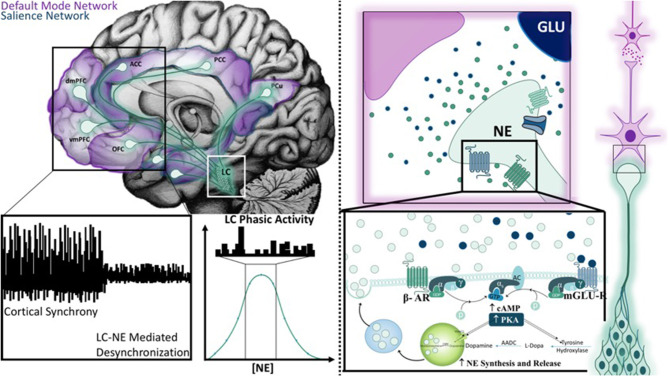Figure 3.
Mechanisms of the Glutamate Amplifies Noradrenergic Effects Theory Hot Spot. The mid-sagittal illustration in the top left corner is overlaid with relevant projection sites of the locus coeruleus system in the context of the default mode and salience networks. Novel stimuli or unexpected events results in a brief cortical desynchronization (as illustrated on the left bottom panel), and is thought to arise from phasic burst firing of the LC (middle bottom panel). The Glutamate Amplifies Noradrenergic Effects Theory asserts that glutamate and norepinephrine work together at “hot spots” to expedite signals from neuronal ensembles that represent salient information. Hot spots develop only when multiple action potentials release high levels of norepinephrine and glutamate is released from nearby terminals. Both signals are mutually enhanced through the activation of β-adrenergic receptors (β-AR), metabotropic glutamate receptors (mGLU-R), and ionic NMDA receptors. As a result, additional norepinephrine and glutamate is synthesized and released to create a hot spot.

